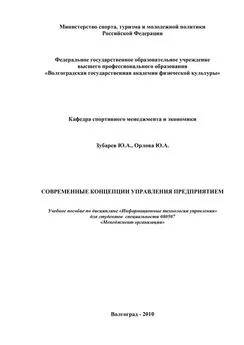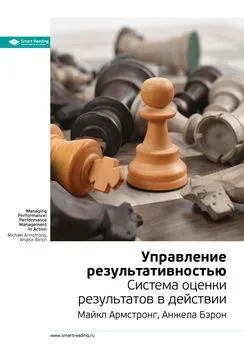Фонс Тромпенаарс - 100 ключевых моделей и концепций управления
- Название:100 ключевых моделей и концепций управления
- Автор:
- Жанр:
- Издательство:Манн, Иванов и Фербер
- Год:2020
- Город:Москва
- ISBN:978-5-00100-648-0
- Рейтинг:
- Избранное:Добавить в избранное
-
Отзывы:
-
Ваша оценка:
Фонс Тромпенаарс - 100 ключевых моделей и концепций управления краткое содержание
Необходимое издание для менеджеров любого уровня, а также для тех, кто изучает науку управления.
100 ключевых моделей и концепций управления - читать онлайн бесплатно ознакомительный отрывок
Интервал:
Закладка:
Mintzberg, H. (2005) Managers Not MBAs: A Hard Look at the Soft Practice of Managing and Management Development , San Francisco, Berrett-Koehler Publishers.
Mintzberg, H., Ahlstrand, B., Lampel, J. (2005) Strategy Bites Back: It Is Far More, and Less, than You Ever Imagined , Harlow, Pearson Education.
Mintzberg, H., Ahlstrand, B., Lampel, J. (2009) Strategy Safari , 2nd Edition, Harlow, Prentice Hall.
Mintzberg, H., Lampel, J. (1999) ‘Reflecting on the Strategy Process’, Sloan Management Review , 40:3, pp. 21–30.
Moffitt, M. L., Bordone, R. C. (2005) The Handbook of Dispute Resolution , San Francisco, Jossey-Bass.
Moore, R. (2008) Benchmarking 100 Success Secrets — The Basics, The Guide on how to Measure, Manage and Improve Performance based on Industry Best Practices , Newstead, Emereo Publishing.
Morgan, G. (2006) Images of Organization , London, Sage.
Morrison, A., Wensley, R. (1991) ‘Boxing Up or Boxed In? A Short History of the Boston Consulting Group Share/Growth Matrix’, Journal of Marketing Management , 7:2, pp. 105–129.
Mumford, M. D. (2012) Handbook of Organizational Creativity , San Diego, Academic Press.
Nidumolu, R., Prahalad, C. K., Rangaswami, M. R. (2009) ‘Why Sustainability Is Now the Key Driver of Innovation’, Harvard Business Review , September, pp. 56–64.
Nielsen, J., Budiu, R. (2012) Mobile Usability , Berkeley, New Riders.
Northouse, P. (2013) Leadership: Theory and Practice , 6th ed., London, Sage.
Ohmae, K. (1982) The Mind of the Strategist: The Art of Japanese Business , New York, McGraw-Hill.
Ohmae, K. (2005) The Next Global Stage: Challenges and Opportunities in Our Borderless World , Philadelphia, Wharton Publishing.
Oliver, R. L. (1999) ‘Whence Consumer Loyalty?’, Journal of Marketing , special issue, pp. 33–44.
Orsini, J. N. (2013) The Essential Deming: Leadership Principles from the Father of Quality , New York, McGraw-Hill.
Osborn, A. F. (1963) Applied Imagination: Principles and Procedures of Creative Problem-Solving (3rd Ed.), New York, Charles Scribner’s Sons.
Osterwalder, A. (2004) The Business Model Ontology: A Proposition in a Design Science Approach , University of Lausanne, Ecole des Hautes Etudes Commerciales (HEC).
Osterwalder, A., Pigneur, Y. (2010) Business Model Generation — A Handbook for Visionaries, Game Changers, and Challengers , Hoboken, John Wiley.
Paauwe, J. (2004) HRM and Performance: Achieving Long-Term Viability , Oxford, Oxford University Press.
Paharia, R. (2013) Loyalty 3.0: How to Revolutionize Customer and Employee Engagement with Big Data and Gamification , New York, McGraw-Hill.
Paine, K. D. (2011) Measure What Matters: Online Tools for Understanding Customers, Social Media, Engagement, and Key Relationships , Hoboken, John Wiley.
Pascale. R., Athos, A. (1981) The Art of Japanese Management , London, Penguin.
Pashler, H., McDaniel, M., Rohrer, D., Bjork, R. (2009) ‘Learning Styles — Concepts and Evidence’, Psychological Science in the Public Interest , 9:3, pp. 105–119.
Pauli, G. (2010) Blue Economy — 10 Years, 100 Innovations, 100 Million Jobs , Taos, Paradigm Publications.
Payne, A., Frow, P. (2013) Strategic Customer Management: Integrating Relationship Marketing and CRM , Cambridge, Cambridge University Press.
Percy, L. (2011) Strategic Integrated Marketing Communications , Oxford, Elsevier.
Person, R. (2013) Balanced Scorecards and Operational Dashboards with Microsoft Excel , 2nd edition, Indianapolis, John Wiley.
Peters, T. J., Waterman, R. H. (2004) In Search of Excellence: Lessons from America’s Best-Run Companies , New York, Harper Business Essentials.
Petty, R. E., Cacioppo, J. T. (1986) Communication and Persuasion: Central and Peripheral Routes to Attitude Change , New York, Springer Verlag.
Pink, D. H. (2010) Drive: The Surprising Truth about what Motivates Us , New York, Riverhead Books.
Porter, M. E. (1979) ‘How Competitive Forces Shape Strategy’, Harvard Business Review , pp. 137–145.
Porter, M. E. (1980) Competitive Strategy: Techniques for Analyzing Industries and Competitors , New York, The Free Press.
Porter, M. E. (1985) Competitive Advantage: Creating and Sustaining Superior Performance , New York, The Free Press.
Porter, M. E. (1990) ‘ How Competitive Forces Shape Strategy’, Harvard Business Review , March — April, pp. 73–91.
Porter, M. E. (1996) ‘What is Strategy?’ Harvard Business Review , Nov/Dec, pp. 61–78.
Porter, M. E. (2008) ‘The Five Competitive Forces That Shape Strategy’, Harvard Business Review , January, pp. 79–93.
Porter, M. E., Kramer, M. R. (2011) ‘Creating Shared Value’, Harvard Business Review , Jan/Feb, 89(1/2), pp. 62–77.
Prahalad, C. K. (2004) The Fortune at the Bottom of the Pyramid: Eradicating Poverty through Profits , Philadelphia, Wharton School Publishing.
Prahalad, C. K., Hart, S. L. (2002) ‘The Fortune at the Bottom of the Pyramid’, Strategy + Business , 26: 2–14.
Prahalad, C. K., Ramaswamy, V. (2003) ‘Co-opting Customer Competence’, Harvard Business Review , January — February 2000: pp. 100–109.
Prahalad, C. K., Ramaswamy, V. (2004) The Future of Competition , Boston, Harvard Business School Press.
Prell, C. (2011) Social Network Analysis: History, Theory and Methodology , London, Sage.
Pryce-Jones, J. (2010) Happiness at Work: Maximizing Your Psychological Capital for Success , Chichester, John Wiley.
Pyzdek, T., Keller, P. (2013) The Handbook for Quality Management, 2nd ed.: A Complete Guide to Operational Excellence , New York, McGraw-Hill.
Quenk, N. L. (2009) Essentials of Myers-Briggs Type Indicator Assessment , Hoboken, John Wiley.
Quinn, R.E, Faerman, S.R, Thompson, M. P., McGrath, M., St. Clair, L. S. (2010) Becoming a Master Manager: A Competing Values Approach , New York, John Wiley.
Rayport, J. F., Sviokla, J. J. (1995) ‘Exploiting the virtual value chain’, Harvard Business Review , 73(6), pp. 75.
Reeves, B., Leighton Read, J. (2009) Total Engagement: Using Games and Virtual Worlds to Change the Way People Work and Businesses Compete , Boston, Harvard Business School Press.
Reid, R. D., Sanders, N. R. (2012) Operations Management , 5th ed., Chichester, John Wiley.
Reimold, D. (2013) Journalism of Ideas: Brainstorming, Developing, and Selling Stories in the Digital Age , New York, Routledge.
Reynolds, T. J., Gutman, J. (1988) ‘Laddering Theory, Method, Analysis, and Interpretation’, Journal of Advertising Research , 28:1, pp. 11–31.
Reynolds, T. J., Olson, J. C. (2001) Understanding Consumer Decision Making: The Means-End Approach to Marketing and Advertising Strategy , Mahwah, Lawrence Erlbaum.
Richardson, J. H. (2010) ‘Saving Capitalism from Itself: Inside the B Corp Revolution’, www.esquire.com/blogs/politics/b-corp-082310
Ridderstråle, J., Nordström, K. (1999) Funky Business , London, Pearson.
Ries, A. and Trout, J. (1981) Positioning: The Battle for your Mind , New York, McGraw-Hill.
Ries, E. (2011) The Lean Startup: How Today’s Entrepreneurs Use Continuous Innovation to Create Radically Successful Businesses , New York, Crown Publishing.
Robinson, W. L. (1974) ‘Conscious Competency — The Mark of a Competent Instructor’, The Personnel Journal , 53:7, pp. 538–539.
Rodriguez, D. A., Patel, R., Bright, A., Gregory, D., Gowing, M. K. (2002) ‘Developing Competency Models to Promote Integrated Human Resource Practices’, Human Resource Management , 41:1, pp. 309–324.
Rogers, E. (1962) Diffusion of Innovations , New York, Simon and Schuster.
Rokeach, M. (1968) Beliefs, Attitudes, and Values , San Francisco, Jossey-Bass.
Rokeach, M. (1973) The Nature of Human Values , New York, The Free Press.
Roos, J., Victor, B. (1999) ‘Towards a New Model of Strategy-Making as Serious Play’, European Management Journal , 17(4), pp. 348–355.
Rubin, K. S. (2013) Essential Scrum: A Practical Guide to the Most Popular Agile Process , Upper Saddle River, Pearson.
Rumelt, R. P., Schendel, D. E., Teece, D. J. (1991) ‘Strategic Management and Economics’, Strategic Management Journal , 12: 5–29.
Sachs, J. (2005) The End of Poverty: Economic Possibilities for Our Time , Penguin, New York.
Sackmann, S. A. (1991) ‘Uncovering Culture in Organizations’, Journal of Applied Behavioral Science, vol. 27:3, pp. 295–317.
Santema, S. (2011) ‘What is Happening in Supply Chain Management? From Push to Pull through Best Value Thinking’, Journal for the Advancement of Performance Information & Value , 3:1, pp. 46–54.
Schein, E. H. (1999) The Corporate Culture Survival Guide: Sense and Nonsense about Culture Change , San Francisco, Jossey-Bass.
Schein, E. H. (2010) Organizational Culture and Leadership , San Francisco, Jossey-Bass.
Schneider, M (2013), Transparenztraum — Literatur, Politik, Medien und das Unmögliche , Berlin, Matthes & Seitz.
Schrage, M. (1999) Serious Play: How the World’s Best Companies Simulate to Innovate , Boston, Harvard Business School Press.
Schutz, W. C. (1955) ‘What Makes Groups Productive?’, Human Relations , 8(4): pp. 429–465.
Schwartz, S. H. (2006) ‘Value Orientations: Measurement, Antecedents and Consequences Across Nations’, Measuring Attitudes Cross-Nationally — Lessons from the European Social Survey , edited by R. Jowell, C. Roberts, R. Fitzgerald, Eva, G., London, Sage.
Selznick, P. (1957) Leadership in administration: A sociological interpretation , Evanston, Row & Peterson.
Semler, R. (1995) Maverick: The Success Story Behind the World’s Most Unusual Workplace , New York, Grand Central Publishing.
Semler, R. (2004) The Seven-Day Weekend: A Better Way to Work in the 21st Century , Madison, Century.
Senge, P. M. (1990) The Fifth Discipline: The Art and Science of the Learning Organization , New York, Currency Doubleday.
Senge, P. M., Smith, B., Kruschwitz, N., Laur, J., Schley, S. (2008) The Necessary Revolution , New York, Crown Publishing.
Sheth, J. N., Sethia, N. K., Srinivas, S. (2011) ‘Mindful Consumption: A Customer-Centric Approach to Sustainability’, Journal of the Academy of Marketing Science , 39:1, pp. 21–39.
Siegel, A., Etzkorn, I. (2013) Simple: Conquering the Crisis of Complexity , New York, Twelve.
Silver, N. (2012) The Signal and the Noise: Why So Many Predictions Fail — But Some Don’t , New York, Penguin.
Sinek, S. (2009) Start with Why: How Great Leaders Inspire Everyone to Take Action , London, Penguin.
Sisodia, R., Sheth, J. and Wolfe, D., eds. (2007) Firms of Endearment: How World-Class Companies Profit from Passion and Purpose , Upper Saddle River, Wharton School Publishing.
Sloane, P. (2012) A Guide to Open Innovation and Crowdsourcing: Advice from Leading Experts , London, Kogan Page.
Slywotzky, A. J., Wise, R. (2003) How to Grow When Markets Don’t , New York, Warner Business Books.
Читать дальшеИнтервал:
Закладка:










